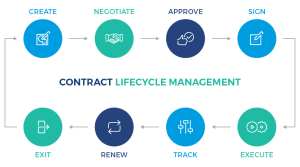
All organizations use some form of a contract management system. In most cases, employees print paper agreements and squeeze them into messy filing cabinets, then update them by hand and track them manually. Businesses can lose their competitive advantage by failing to upgrade these outdated systems and management processes.
5 Contract Management Issues Facing Businesses
These five issues are exacerbated through the use of antiquated contract management systems. If businesses do not streamline these systems, they can become exposed to crippling losses.
1. Revenue Leakage
The procedures and practices within a business should focus on maximizing revenue and preventing leaks. Revenue leakage occurs when employees overlook, incorrectly record, or ignored data. These leaks can cause devastating effects for a business:
- Under-billed or unbilled services
- Misapplied credits and adjustments
- Incorrect pricing
- Late or non-existent contract renewals
- Contract renewals without price increases
Revenue assurance initiatives cannot be successfully implemented when a cumbersome contract management system makes it hard for employees to track important updates. Simple solutions, such as switching to an online database, can help employees search through data quickly using terms, quantities, or status updates. These systems enable employees to catch missed payments and prevent further leaks from occurring.
2. Risk Exposure
Risk management is an essential part of any business. Companies must create procedures and processes that help protect their intellectual property and minimize exposure to litigation and compliance issues.
The Gartner group points out that manually filed contracts may be located “in hundreds of different locations with no link between them to ensure that changes are reflected in every copy.” Failure to keep contracts up-to-date, easily accessible, and consistent can lead to violations in compliance laws and breaches in contractual obligations.
An automated system can help businesses generate consistent terms for each contract, use the most current data for each product or service, and ensure all parties sign, update, and approve each document. These measures help reduce risk and create air-tight agreements across all departments.
3. Organizational Inefficiency
Complex contractual procedures become harder to monitor, update, and complete when the system revolves around paper-based products, rooms filled with filing cabinets, and rudimentary numbering systems. Failing to find or update a contract quickly can lead to unnecessary costs and missed opportunities.
Efficiently designed systems help lower administrative duties, allowing employees to utilize contract data in day-to-day operations and promote more efficient use of their time.
4. Inefficient Cost Management
Procurement teams need access to contract data to track updates and renegotiate new agreements. Slow, manual systems and confusing protocols can prevent departments from effectively overseeing buy-side contracts and maximizing costs.
Automated systems help teams create reports for historical products, service prices and product volumes, expiring contracts and price revision rights, service level agreements (SLAs), and contract milestones.
5. Lack of Corporate Governance
Businesses must gain and keep the trust of investors, partners, and consumers to grow. Failure to report losses, compliance issues, or potential risks can deter investors from renewing their interest. Whether deliberate or not, violating corporate regulations, the Sarbanes-Oxley Act (SOX), and internal policies can lead to broken partnerships and lost revenue. Outdated contract management systems can exacerbate these issues and cause businesses to miss important renewals or report crucial updates to parties.
A more efficient, modern contract life-cycle system can help promote transparency and keep businesses one step ahead of ongoing compliance obligations.





